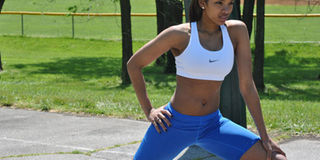Exercise your way to painless menses

Advice. Ask your doctor before starting exercise routine
What you need to know:
Health benefits. Experts say exercises help the brain release endorphins hormones which act as natural pain killers.
It’s that time of the month again and the all too familiar pains are at it again. You have popped the painkillers and are gripping that hot water bottle for dear life, but all your efforts are in vain. Exercising could be the only and healthier choice left to alleviate the dysmenorrhea (painful menstruation). Menstruation pains are caused when the uterus is trying to expel blood, the sensation is like mini-labour contractions, explains Dr Peter Isagara, a gynecologist at Kiboga Hospital.
At times pain transpires when the muscular wall of the uterus contracts and presses against blood vessels, briefly cutting off oxygen supply hence triggering pain. The excruciating spasms that affect the lower abdomen and sometimes spreading to the lower back and the thighs is as familiar as walking to most women. However, the level of pain and symptoms varies from woman to woman. One in three women at some point face severe cramps during what you would call the monthly nightmare.
With the tender body and irritable mood, you may not feel as enthusiastic to get out of bed. But getting on your feet and breaking a sweat could be the end of your misery. According to Dr Isagara, exercises help the brain release endorphins hormones, what he refers to as natural pain killers. These happy hormones relieve the pain and burn the posta glands that are causing the contractions. The best exercises to get your heart rate up are aerobics. Aerobics excite the blood circulation, expelling all the blocks of blood that cause the pain to flow out of the body, as explained by Hanifah Moneero, an instructor at Indulge Maternity Spa and Gym.
Other recommended vigorous exercises to incorporate in your routine are squats, wide angle seated pose and skipping. These will keep rocking your pelvic encouraging the blood circulation. Moneero clarifies that after a workout, the flow of blood is very heavy. That is why she emphasises hydration during these routines, remarking that a hot cup of tea or plain room temperature water as the best beverages.
Going for a 15-minute jog could also help you break a sweat.
The problem with jogging is by the time you realise you are not cut out for it, it is too far back a distance to walk during this moody period. But walking isn’t such a bad idea either, it is better than curling up like a ball in bed. Walking briskly will also stimulate your circulation without making you too tired.



